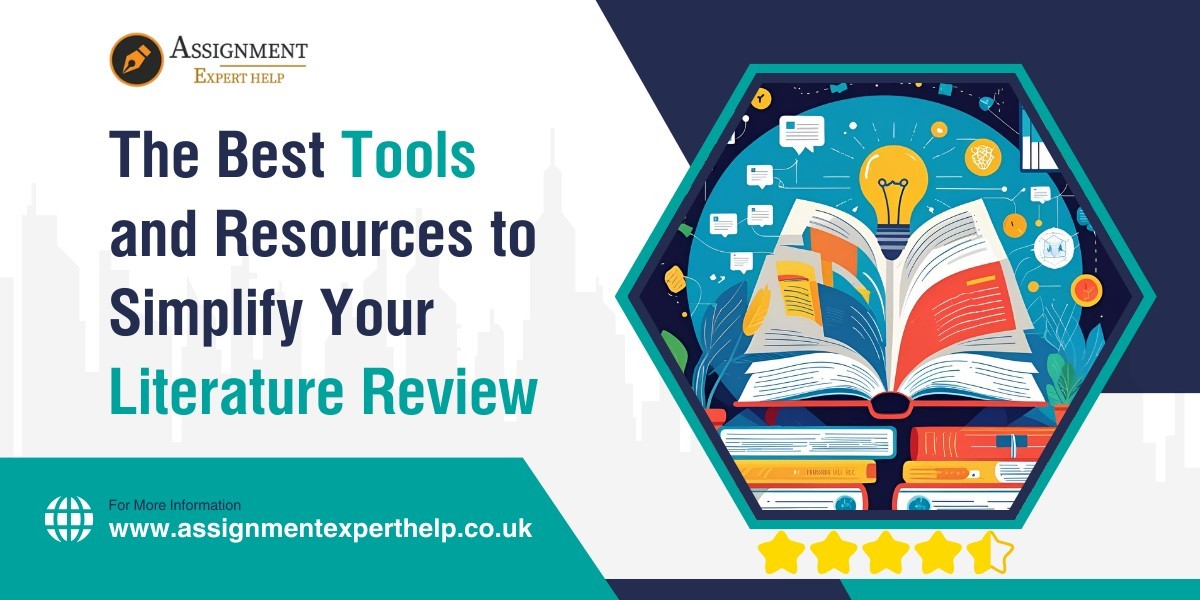Writing a literature review can often feel like an overwhelming task. It involves sifting through vast amounts of research, synthesising complex ideas, and critically analysing multiple perspectives. However, with the right tools and resources, this process can be made significantly more manageable. In addition to this, with the fastidious support of assignment experts, the scrambling challenges can be easily tackled.
This post will explore some of the best tools and resources available to help you streamline your literature review, saving time and enhancing the quality of your research, while also highlighting how academic writing help can support you along the way.
The Best Tools and Resources
1. Reference Management Tools
Effective organisation of references is crucial in the literature review process. Without the right system, it’s easy to get lost in a sea of articles, journals, and books. Reference management tools help researchers organise citations, manage PDFs, and streamline the process of referencing. Here are some of the most popular options:
a) Zotero
Zotero is a free, open-source tool that helps you collect, organise, cite, and share your research materials. It automatically detects bibliographic information from websites and databases and stores it in a personal library. With its browser extension, you can capture citations with a single click.
Key Features:
- Seamless integration with web browsers to automatically capture citation data.
- Support for various citation styles like APA, MLA, and Chicago.
- Synchronisation across devices, allowing access to references anywhere.
- Collaboration features for sharing resources with other researchers.
b) Mendeley
Mendeley is another free reference manager and academic social network that allows you to organise research, collaborate with others, and discover new content. It also provides a robust citation tool that can be integrated with Microsoft Word.
Key Features:
- PDF organiser with annotation tools.
- Citation plugin for Microsoft Word and LibreOffice.
- Ability to share and collaborate on research with colleagues.
- A large academic community for research sharing and networking.
c) EndNote
EndNote is a paid reference management tool used extensively in academia. It offers an advanced set of features, including robust citation management, library sharing, and collaboration options.
Key Features:
- Large reference database for organising articles, books, and other resources.
- Cite while you write a feature to integrate citations directly into Word documents.
- Allows collaboration on projects and sharing libraries with co-authors.
- Comprehensive support for over 6,000 citation styles.
2. Search Engines and Databases
A literature review requires a thorough search for relevant literature. Using search engines and academic databases that are tailored to research purposes is essential for finding high-quality academic papers. Here are some of the best tools for this task:
a) Google Scholar
Google Scholar is one of the most widely used search engines for academic research. It indexes scholarly articles, theses, books, conference papers, and patents from various sources, including university repositories.
Key Features:
- Free access to scholarly articles.
- Citation counts and related articles for further research.
- Alerts for specific topics or keywords to keep you updated with new research.
- Simple user interface and ease of use.
b) PubMed
For researchers working in the fields of medicine, healthcare, and life sciences, PubMed is a go-to database. It offers access to millions of articles, journals, and medical literature.
Key Features:
- Access to a comprehensive collection of biomedical literature.
- Filters for specific article types, publication dates, and more.
- Free to use with full-text access to many articles.
- Highly reliable and respected in the medical community.
c) Scopus
Scopus is a multidisciplinary database offering access to high-quality journals, conference proceedings, patents, and books. It’s ideal for researchers looking to access an extensive collection of peer-reviewed content.
Key Features:
- Citation tracking and author profile management.
- In-depth analysis of articles, journals, and trends.
- Metrics to evaluate the impact of specific papers and researchers.
- Integration with tools like Mendeley and other reference management systems.
d) JSTOR
JSTOR is a digital library offering access to a vast range of academic journals, books, and primary sources across disciplines. While JSTOR is subscription-based, many universities provide free access to students and faculty.
Key Features:
- Access to high-quality, peer-reviewed academic articles and journals.
- Archive of content dating back to the earliest publications.
- Offers a wide range of disciplines, including humanities, social sciences, and natural sciences.
- Many resources are available for free or through institutional access.
3. Text Analysis Tools
When conducting a literature review, one of the most challenging tasks can be synthesising large volumes of text. Text analysis tools can assist in identifying patterns, themes, and connections between different articles. Here are some tools that can help:
a) NVivo
NVivo is a qualitative data analysis (QDA) software tool that helps researchers analyse and visualise textual data. It’s especially useful when working with large datasets or qualitative research.
Key Features:
- Helps analyse qualitative data, including interviews, surveys, and literature.
- Provides coding tools to categorise and organise data.
- Visual tools for mapping relationships and themes.
- Integration with other data sources like Excel or SPSS.
b) Leximancer
Leximancer is a text analytics tool that allows you to extract key themes from large bodies of text. It’s particularly useful for identifying patterns or topics across multiple research articles.
Key Features:
- Automatically identifies key concepts and themes from textual data.
- Visualises relationships between themes through concept maps.
- Useful for comparing and contrasting different sources of literature.
- Supports various document formats such as PDFs and Word files.
c) VOSviewer
VOSviewer is a tool used for visualising and analysing the relationships between research articles or keywords. It’s ideal for researchers who need to map and visualise connections within a body of literature.
Key Features:
- Visualisation of co-citation networks and bibliographic data.
- Ability to create maps of co-occurrence, keyword relationships, and citation patterns.
- Open-source and freely available.
- Interactive and customisable visualisations.
4. Synthesis Tools
Synthesis involves combining the insights from multiple sources into a coherent narrative. Several tools help researchers synthesise information, summarise key findings, and structure the review effectively.
a) Rayyan
Rayyan is a free, web-based tool that helps researchers conduct systematic reviews by facilitating the process of screening and sorting articles. It is especially useful for collaborative literature reviews.
Key Features:
- Collaborative article screening and categorisation.
- Tagging and labelling to group relevant articles.
- Advanced filtering to help you organise and prioritise literature.
- Speedy and intuitive interface for large-scale review projects.
b) Ref-N-Write
Ref-N-Write is a tool designed to help researchers write and paraphrase academic content. It can be used to rephrase sections of your literature review, improving clarity and avoiding plagiarism.
Key Features:
- Paraphrasing suggestions based on academic writing.
- A large database of common academic phrases.
- Helps with improving the quality of writing in research papers.
- Integrated citation and reference tools.
c) Synthesis Matrix
A synthesis matrix is a tool that helps organise and synthesise your literature. It’s a simple spreadsheet or table where you categorise the key themes or arguments from various sources.
Key Features:
- Helps organise articles by themes, methods, or findings.
- Allows you to see where articles overlap or conflict.
- Provides a visual representation of key patterns across sources.
- Can be used to structure the review by research question or objective.
5. Writing and Collaboration Tools
Once your literature has been organised and synthesised, the next step is writing your literature review. Fortunately, there are several tools available to streamline the writing process, improve readability, and collaborate with others.
a) Grammarly
Grammarly is an AI-powered tool that helps improve the quality of your writing. It checks for grammatical, spelling, and punctuation errors, as well as provides suggestions for better sentence structure.
Key Features:
- Real-time grammar and punctuation checks.
- Clarity improvements and style suggestions.
- Vocabulary enhancement features.
- Plagiarism checker for academic integrity.
b) Google Docs
Google Docs is a cloud-based word processor that makes collaborative writing easier. Multiple researchers can work on the same document simultaneously, and all changes are automatically saved.
Key Features:
- Real-time collaboration and editing with other researchers.
- Cloud storage and easy sharing with peers and collaborators.
- Auto-saving and version history.
- Compatible with various file formats, including Word and PDF.
c) Scrivener
Scrivener is a powerful writing tool designed for long-form writing projects like literature reviews, dissertations, and research papers. It helps organise content into manageable sections and allows you to view your work in an outline format.
Key Features:
- Organisational tools to structure large writing projects.
- Distraction-free writing mode.
- Integrated research storage within the program.
- Export to various formats, including PDF, Word, and LaTeX.
Conclusion
A successful literature review requires a combination of thorough research, organisation, critical thinking, and clear writing. With the right set of tools, the process becomes more efficient and manageable, enabling you to focus on analysis rather than logistics. Reference managers like Zotero and Mendeley help organise citations, while search engines like Google Scholar and PubMed ensure you access quality sources. Text analysis and synthesis tools assist with drawing connections between papers and themes, and writing aids like Grammarly and Google Docs enhance the clarity and coherence of your review.
By integrating these tools into your research process and leveraging the assignment expert help, you can significantly simplify your literature review, reduce the time spent on repetitive tasks, and ultimately produce a high-quality, well-organised review that advances your research — and if needed, research paper writing help can provide additional guidance.









